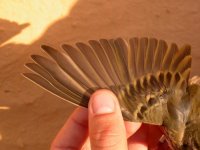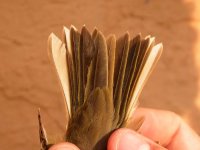Howard King
Well-known member
I have just put some images of the Olive-backed Pipit ringed last October here in Bahrain and some of a Great Grey Shrike caught yesterday along with many other species on our ringing page. We would like comments and thoughts on- ssp of the shrike in particular
http://www.hawar-islands.com/blog/gen_stub.php
http://www.hawar-islands.com/blog/gen_stub.php





